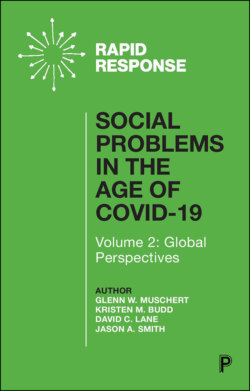Читать книгу Social Problems in the Age of COVID-19 Vol 2 - Группа авторов - Страница 25
На сайте Литреса книга снята с продажи.
Increase Resources to Postsecondary Educational Programs, Especially those that Target Disadvantaged Youth and Young Adults
ОглавлениеThe pandemic has created worldwide obstacles for young people’s educational trajectories. As these obstacles promise to accentuate educational inequalities based on social class, race, and gender, as well as between countries, strong policy responses are necessary to alleviate such disproportional effects. While strengthening the safety net in general will assist struggling youth in times of need and help to ameliorate their problems, young adults coming of age in a pandemic need specific educational supports. These interventions should target educational institutions that serve disadvantaged populations, as well as disadvantaged students directly. Particular attention should be directed to the plight of young girls in developing countries. School closures, for example, during the Ebola crisis in Africa, have increased girls’ domestic responsibilities and precipitated school dropout. If the pandemic leads to similar outcomes, it could reverse the significant educational gains made during the last few decades.
While in some countries, such as Germany, Sweden, Argentina, and Egypt, higher education is tuition-free, in many others, like the United States, Great Britain, Japan, and Chile, college tuition can be a formidable expenditure for most families. In these latter countries, the economic fallout from the pandemic has made it even harder for families to shoulder the high costs of attendance. As stress on municipal, state, and federal budgets around the world mounts (due to declining tax revenues and expenditures related to the pandemic), pressure will increase to reduce monetary support for publicly supported educational institutions. Instead, educational allocations should be retained or even augmented. Without such support, colleges and universities, facing declines in student enrollments and reduced public support, will look to tuition increases to remain viable. Increases in government-sponsored educational appropriations are needed to lower costs, especially for disadvantaged students, and to widen opportunities for re-training as employment in some sectors may not recover.
When the pandemic hit, many college students, especially those from working-class and poor families, found themselves in dire economic circumstances. In the US, many of those in immediate need received emergency grants through the Coronavirus Aid, Relief, and Economic Security (CARES) Act. Additionally, some local governments announced plans to deepen financial support of higher education students in need, as well as to expand programs for frontline workers, grocery store employees, and those in trash collection to enable them to pursue postsecondary education tuition-free. Recommendations include increasing direct support to students through short-term programs to alleviate food and housing insecurity. Awareness campaigns should be developed, or augmented, to ensure that young adults are informed about the programs for which they are eligible. In the long term, governmental support must increase in countries that rely heavily on tuition to finance higher education. Enhanced appropriations are necessary to enable more students to attend college and vocational training programs and to reduce the burden of student debt.
